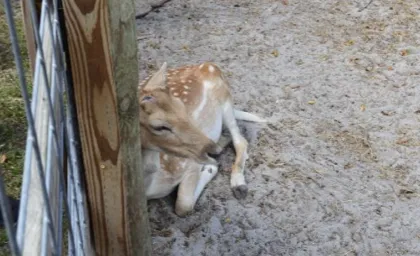
European Fallow Deer
by: Marina Santos
Discover one of Europe's most iconic deer species.
Meet the European Fallow Deer, a majestic inhabitant of Europe's woodlands!
Overview:
• The European Fallow Deer is indigenous to various regions across Europe, including the United Kingdom, Spain, France, and Germany. It has also been introduced to other parts of the world for hunting and conservation purposes.
• Within the deer family, fallow deer are closely related to other species like the sika deer and red deer.
• They inhabit a variety of forested habitats, including deciduous woodlands, mixed forests, and open grasslands.
Physical Description: The European Fallow Deer is renowned for its elegant appearance and striking coat coloration. It typically showcases a coat ranging from light brown to dark chestnut, with distinctive white spots scattered across its body. During the summer months, their coat is sleek and reddish- brown, while in winter, it becomes thicker and more grayish in color. Both males and females sport branching antlers, with those of the males typically larger and more elaborately branched.
Diet and Eating Habits:
Fallow deer are predominantly herbivorous, feeding on a diverse array of plant materials such as grasses, leaves, shoots, and fruits. They are particularly fond of browsing on tender shoots and leaves found in woodlands. During periods of scarce food availability, they may also resort to eating bark and twigs.
Behavior and Personality: European Fallow Deer exhibit a gregarious nature, often forming herds consisting of females and their offspring, known as harems. During the mating season, dominant males establish territories and compete for access to females. Their rutting behavior includes vocalizations, scent marking, and ritualized sparring with their antlers. Outside of the mating season, fallow deer are generally peaceful animals, though they remain vigilant against potential predators.
Domestication and Uses: While not fully domesticated, European Fallow Deer have been selectively bred in captivity for various purposes, including hunting, venison production, and ornamental park populations. Their venison is highly prized for its tender texture and rich flavor, making it a sought-after delicacy in European cuisine. Additionally, their antlers are valued for use in traditional medicine and as decorative ornaments.
Cultural Significance:
European Fallow Deer hold cultural significance in many European societies, symbolizing traits such as grace, beauty, and resilience. In folklore and mythology, they are often associated with woodland deities and symbols of fertility and abundance. Their elegant appearance and graceful movements have inspired artists, poets, and storytellers throughout history.
Economic Importance: Fallow deer contribute to local economies through hunting tourism, venison production, and the sale of antler products. In regions where they are abundant, hunting licenses and guided hunting expeditions generate revenue for conservation efforts and rural communities.
Additionally, their presence in natural parks and reserves attracts visitors interested in wildlife observation and photography.
Conservation Status:
The European Fallow Deer is currently classified as "Least Concern" on the IUCN Red List, owing to its stable population and widespread distribution across Europe. However, localized threats such as habitat loss, poaching, and competition with introduced species warrant continued monitoring and conservation efforts to ensure their long-term survival.
Takeaway:
The European Fallow Deer, with its graceful demeanor and cultural significance, is a cherished symbol of Europe's natural heritage. While their conservation status remains relatively stable, proactive measures are needed to address ongoing threats and preserve their populations for
future generations to admire and enjoy. As stewards of the land, we play a crucial role in safeguarding the habitats and ecosystems that sustain these
